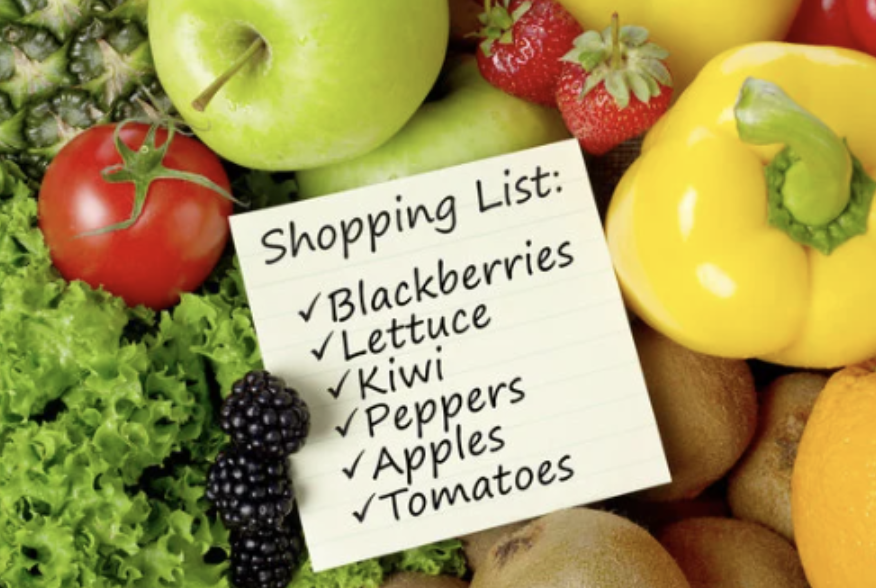Save Big on Groceries with These 10 Tips
Let’s be real—groceries are expensive, and none of us want to live off ramen. Between rent, student loans, and keeping up with lifestyle expenses, figuring out budget-friendly groceries is a must. But being on a budget doesn’t mean sacrificing quality food. With some discount grocery shopping hacks, smart tools, and meal planning apps, you can keep costs down without missing out on delicious, nutritious meals.
Here are 10 proven ways to cut your grocery bills while keeping your quality standards high—because saving on groceries is about working smarter, not harder.
Millennials Shopping Smart
1. Master Your Grocery Game with Meal Planning Apps
Meal planning app
Meal planning isn’t just for parents—it’s perfect for young professionals, students, and anyone trying to eat well without overspending. Using affordable meal planning apps like Mealime or Yummly helps you plan balanced meals, generate shopping lists, and avoid last-minute takeout temptations.
Batch-cooking on weekends and freezing meals is also a time-saver. When you plan meals ahead, you control your spending and cut food waste—a win-win for both your budget and the environment.
2. The Power of a Shopping List: Use Tools to Stay Focused
Heading to the grocery store without a plan? Big mistake. Studies show that 57% of Millennials overspend due to impulse purchases. Apps like AnyList help you create a digital shopping list, share it with roommates or partners, and cross off items as you shop.
Shopping lists keep you organized and prevent those “oops, I bought five bags of chips” moments. Plus, they make discount grocery shopping much easier since you’re focused only on what you need.
Shopping list
3. Stack Sales, Coupons, and Cashback for Maximum Savings
Who doesn’t love a good deal? Using coupon apps like Ibotta or Rakuten gives you cashback on your everyday grocery purchases. Combine these with in-store promotions to double your savings. Apps like Flipp also let you browse local weekly ads and plan your shopping trip around the best discounts.
Planning your meals around sales ensures you still enjoy high-quality food on a budget—without breaking the bank.
4. Buy in Bulk—but Only What You’ll Actually Use
Bulk shopping makes sense when you focus on non-perishables like grains, pasta, or canned goods. But beware: not everything is worth buying in bulk. Apps like Costco help you find deals on essentials, and using airtight containers extends shelf life, keeping your pantry organized.
Pro tip: If bulk quantities are too much for you, split them with friends or roommates. This way, you still enjoy budget-friendly groceries while minimizing waste.
Organized Pantry with Bulk Items
5. Store Brands: Your Secret Weapon for Affordable Quality
Store-brand products are low-key amazing. Private-label options often come from the same manufacturers as name brands but cost much less. Target’s Good & Gather and Aldi’s organic products are great examples of high-quality food on a budget.
Trying out store brands is one of the easiest ways to slash your grocery bill while still enjoying premium food and snacks. Give them a shot—you might just find your new favorite.
6. Seasonal Produce: Shop Smarter, Eat Fresher
Seasonal fruits and vegetables not only taste better but are also cheaper. Use tools like the Seasonal Food Guide to see what’s in season near you. Farmers' markets and co-ops are goldmines for fresh produce at lower prices than supermarkets.
Incorporating seasonal foods into your diet adds variety without hurting your budget. Plus, shopping locally supports small businesses and keeps your meals environmentally friendly.
7. Reduce Meat Consumption and Embrace Plant-Based Proteins
Cutting back on meat is a simple way to reduce your grocery costs. Affordable meal planning apps like Yummly offer endless plant-based recipes, from lentil soups to chickpea curries. Tofu, beans, and quinoa are budget-friendly protein sources that fit any lifestyle.
Adding plant-based meals a few times a week is great for saving on groceries and keeping your diet sustainable and healthy.
8. Skip Processed Foods and Get Cooking
Convenience foods are tempting but often overpriced. Cooking at home from scratch gives you more control over ingredients, improves nutrition, and saves money. Use recipe apps like SideChef to find easy, budget-friendly meals you can whip up at home. Instagram and Tiktok are also loaded with recipes—now’s the time to put them into action!
Cooking doesn’t have to be complicated, and it’s a fun way to impress friends or family—while keeping things budget-friendly and delicious.
9. Don’t Let Shrinkflation Steal Your Savings
Ever notice that packages seem smaller, but the prices stay the same? That’s shrinkflation in action. Pay attention to unit prices and opt for bulk or whole foods, which are less likely to be affected. Tools like the Basket app let you compare prices across stores, helping you avoid overpaying for less product.
Staying aware of these trends ensures your discount grocery shopping efforts pay off without sneaky losses.
10. Shop Smart: Timing and Location Matter
When and where you shop matters. Midweek shopping trips are usually quieter and come with markdowns on older stock. Explore discount stores like Aldi or warehouse clubs like Costco for budget-friendly groceries. Apps like Too Good To Go also connect you with restaurants and stores offering unsold food at reduced prices—great for both your wallet and the planet.
Experiment with shopping times and places to discover where you can score the best deals with minimal stress.
What’s Next? Build Your Perfect Budget Grocery Plan
Now that you know how to save on groceries without sacrificing quality, it’s time to create a system that works long-term. Start tracking your monthly grocery spending with budgeting apps like You Need A Budget (YNAB) to spot patterns and identify areas to save.
Ready for the next challenge? Learn the secrets of meal prepping for a busy schedule. Mastering these skills will take your savings—and your meals—to the next level.




